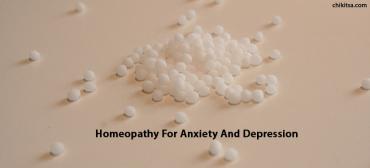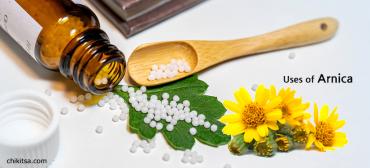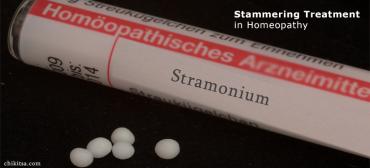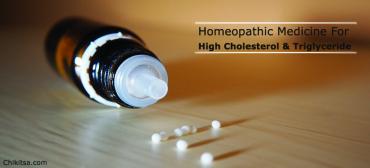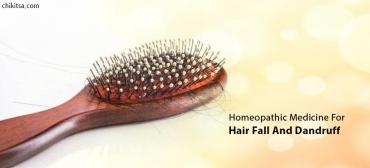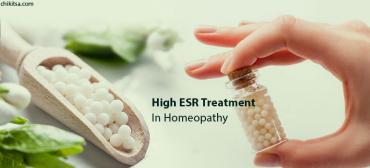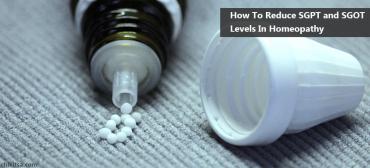Permanent Cure for Rheumatoid Arthritis in Homeopathy
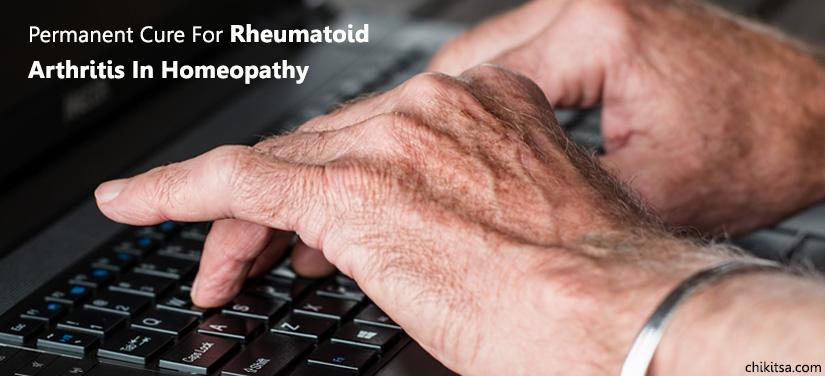
In this world of 21st century, the field of medicine in general has seen and is continuing to see newer advances each day. People’s perspective regarding a particular illness and its treatment has changed drastically over the past few years. This is because of a rising awareness and literacy among the people, that they now recognize the role of homoeopathic medicines in the management of their day-to-day problems - physical, mental or emotional.
The general public now understands the importance of addressing their problems and seeking the most natural ways to manage them. Although there still exists a section of individuals who see Homoeopathy as placebo or just sweet pills, the domain of this system of medicine has extending way beyond, with constant research and studies being done and updated daily. I would not place homoeopathy above all other systems of medicine since it each of them has their own scopes and limitations, but one thing worth specifying is that Homoeopathy has certainly emerged as an underdog when it comes to managing nearly all types of diseases.
What is Rheumatoid Arthritis?
Rheumatoid arthritis is a chronic inflammatory, an autoimmune affection of the joints. This condition has intermittent exacerbations when the inflammation flares up causing severe joint pain, stiffness and even fever and remissions when the patient appears to be absolutely normal. Although rheumatoid arthritis is not a major cause of mortality, it can cause considerable disability.
Background:
Out of 291 diseases studied globally, rheumatoid arthritis emerged as the 42nd highest contributor for disabilities. It affects about 0.5-1% population all over the world. Prevalence of RA is higher in females than in males.
In India, patients with RA have a four-fold risk of developing cardio-vascular illnesses. However, there is no associated mortality. The prevalence of rheumatoid arthritis in India ranged from 0.28 to 0.7% of the general population in India.
A number of genetic, hormonal and hereditary factors along with infections and environmental factors may be responsible for the development of rheumatoid arthritis.
Signs and Symptoms of Rheumatoid Arthritis
- Pain, swelling and stiffness of small joints of hands and feet are typical symptoms of rheumatoid arthritis.
- In an acute onset, symptoms are polyarthritis, morning stiffness (lasting for more than one hour) and a pitting type of edema. In other cases, onset is gradual.
- Joint affection is symmetrical – Metacarpophalangeal Joints (MCP Joints) and Interphalangeal Ioints (IPJ).
- Large joint affection appears later during the disease.
- Long standing cases show characteristic deformities – “swan neck†deformity, “button hole†deformity and a Z-shaped deformity of the thumb. “Cock-up†toe deformities in the feet can be seen.
- Typical red, inflamed nodules can be seen in acute attacks of rheumatoid arthritis.
- Other symptoms like a fever in acute attacks, generalized weakness, reduced workability and fatigue or depression may be present.
Complications Include:
- “Baker’s cyst†– This cyst develops behind the knee when the knee joint is involved. The cyst may rupture causing pain in the calf.
- Rheumatoid nodules develop over the pressure surfaces on the body like elbows, fingers, scalp and lower back.
- Sjogren’s Syndrome – Eye symptoms like dry eyes, dry mouth and keratoconjunctivitis. Eye complications occur in about 25-30% of all cases.
- Pleural effusion occurs in about 25% of all cases. Other lung symptoms are pulmonary nodules, fibrosis and small airway disease. Pulmonary hypertension is seen in about 30% of all cases of rheumatoid arthritis.
- Most common complication of RA is pericarditis. Cardiac involvement occurs in about 30% of the cases.
- Most common affection of the blood due to rheumatoid arthritis is anemia.
- Felty’s Syndrome – Characterized by rheumatoid arthritis, splenomegaly, reduced WBCs, platelets and hemoglobin.
- Carpal tunnel syndrome from radial nerve compression and tarsal tunnel syndrome. Pain due to nervous involvement is typically burning type of a pain with tingling and numbness in the fingers or toes.
Diagnosis of Rheumatoid Arthritis:
- Diagnosis is usually clinically based upon elaborate history taking and a good physical examination.
- Anemia is seen in about 25% of cases.
- ESR and CRP are two major markers for rheumatoid arthritis. High levels suggest an aggressive course of the disease.
- RA factor gives a definitive diagnosis. It is also used as a means to keep follow up by understanding if the counts have reduced or increased.
- Anti Citrullinated Peptide Antibodies (ACPA) test is more sensitive and specific than RA factor for the diagnosis of rheumatoid arthritis.
- X-rays of joints in PA view are done for initial assessment and should be repeated periodically.
Permanent Cure for Rheumatoid Arthritis in Homoeopathy
Rheumatoid arthritis can cause significant work disability and reduce patient’s quality of life. In the long run, patients also tend to develop fatigue and depression due to increasing disability.
Homoeopathy is one of the most popularly used alternative systems of medicine. The role of Homoeopathy in the management of rheumatoid arthritis is prominently holistic and individualistic. Each patient is approached and treated based entirely upon characteristic signs and symptoms. This is because of characteristic symptoms of the same illness very differently in different patients.
When a case of rheumatoid arthritis is presented to a homoeopathic practitioner, a detailed history taking is done which includes onset, duration and progress of the illness, past and family history and personal history. Mental and emotional history as well as life space details of a patient is equally important in evaluating the case with an individualistic approach.
The definition of health according to WHO is “Health is a state of complete physical, mental, and social well being and not merely absence of disease or infirmityâ€. The WHO too recognizes mental and emotional parameters as parameters to assess health.
A recent research Conducted to Assess Significance of Homoeopathic Medicine in Cases of Rheumatoid Arthritis Showed:
- Patients who received Homoeopathic consultation experienced significant improvement as compared to those receiving no consultation.
- Homoeopathic medicines significantly reduced weekly pain, general workability and negative mood.
- Homoeopathic intervention in chronic, active yet relatively stable patients of rheumatoid arthritis had significant benefits.
- Homoeopathic medicines reduced joint swelling and pain.
Commonly used Homoeopathic Medicines for Rheumatoid Arthritis
1. Arnica – Rheumatic symptoms after blunt trauma or injury. Body aches and joint pains as if beaten. The patient is averse to being touched and so he has fear of going into crowded places. Rheumatism begins first in hands and feet and then extends upwards.
2. Actea spicata – Rheumatic remedy especially for small joints of hands and feet, wrists and ankles. Pain is tearing and tingling in nature. Swelling and redness of wrist joints from any movement.
3. Bryonia – Stitching and tearing pain in joints worse from any movement and better from rest. Joints are red, swollen and hot. Joint pains from the sudden change of weather. Stiffness in back and arthritis of knees is worse from any movement. This remedy is suitable for individuals who suffer from constipation and show a constant worry for business.
4. Benzoic acid – Joints crack on moving them. Tearing and stitching pain in joints. Pain and swelling of wrist and knee joints. Rheumatic nodes on joints are painful.
5. Colchicum – This remedy is beneficial for chronic rheumatic affections muscular tissues and joints. Joints are red, swollen and hot with a characteristic tearing type of pain in joints. Pain is worse in evening and at night. There is fever with swelling of joints. Complaints in individuals who stay up at night like professionals and students.
6. Cimicifuga – This remedy is useful for rheumatic affections along with uterine or ovarian conditions. It has a marked action on rheumatism in females who also complain of depression and a feeling of impending misfortune. Rheumatism of joints with stiffness and involuntary tics and a feeling of heaviness of limbs.
7. Rhus Tox – This remedy is frequently indicated for rheumatism. There is a tearing type of pain in joints as if bones were being scraped. Arthritis of knees and back. Pain is along with stiffness and soreness of joints. Complaints from over-straining or over-exertion. Joints are hot, swollen and tender in cold weather.
8. Causticum – The action of this remedy is specifically for chronic rheumatic affections of joints. Indicated for deformities of joints resulting in progressive loss of muscular strength. Restlessness at night due to tearing type of pain in joints. Pain and stiffness are better from warmth especially in bed.
9. Calcarea carb – This is one of the most widely used remedies in Homoeopathy. Indicated specifically in fat, fair, flabby females who sweat excessively and have a tendency to catch a cold. Rheumatic pains and swelling of joints after exposure to wet weather. Feet are cold and clammy as if wet.
10. Kali carb – Indicated for rheumatoid arthritis in persons who are hypersensitive to light, noise and touch and extremely irritable. Rheumatic swelling and pain in joints without fever. Tips of toes and fingers are painful.
11. Ledum Pal – Indicated for rheumatoid arthritis beginning in feet and travelling upwards. The patient typically is sensitive to cold. Joints are swollen, hot and pale. Nodules over joints. Cracking of joints, worse from warmth. Ankles are swollen making it difficult to walk.
12. Rhododendron – Characteristic indication is rheumatism in hot weather. Complaints are typically worse before a storm. Tearing type of pain and swelling of joints. Pain in arms and wrists is worse from rest. Symptoms become worse from every change of weather.
13. Guaiacum – Chief action of this remedy is on rheumatic constitutions that are slow to react and comprehend. Rheumatic affections of the shoulders, arms and hands. Joints are swollen, painful and unable to tolerate heat or pressure. Immovable stiffness of joints.
14. Viola Odorata – typical indication is swelling and pain in right carpal and metacarpophalangeal joints.
There are more than 5000 different remedies in Homoeopathy. Daily newer additions are being made to the Homoeopathic Pharmacopeia. Each of these remedies either acts on the person as a whole or particularly over some part or organ.
The list above is only a representation of the types of Homoeopathic remedies available at your dispense. Yet, it is entirely at the Homoeopathic physician’s discretion to prescribe a particular remedy for your case of rheumatoid arthritis.
Cure Duration for Rheumatoid Arthritis in Homoeopathy
Management of rheumatoid arthritis with Homoeopathy will vary from person to person. Some may require treatment for a short duration; while others will require a long-term monitored treatment plan. The duration of cure and curability of rheumatoid arthritis cases will depend entirely upon nature, duration of illness and associated deformities and extra-articular symptoms or complications.
It is to be noted that homoeopathic system of medicine can help in improving the quality of life of individuals who already present with deformities or complications. If detected early, there can certainly be a permanent cure for rheumatoid arthritis in Homoeopathy.
Deformities and other structural changes which have already taken place do not go away with Homoeopathic medicines. However, the occurrence of these deformities or systemic complications can certainly be prevented with Homoeopathy. In spite of these structural changes, Homoeopathy has proven to provide a general sense of well-being and an improved physical health.


